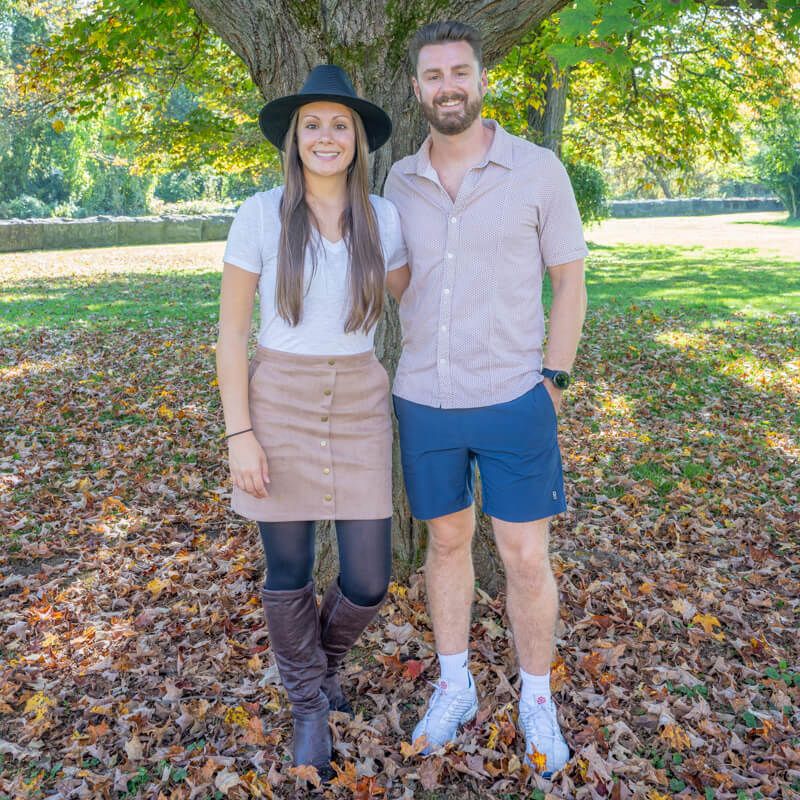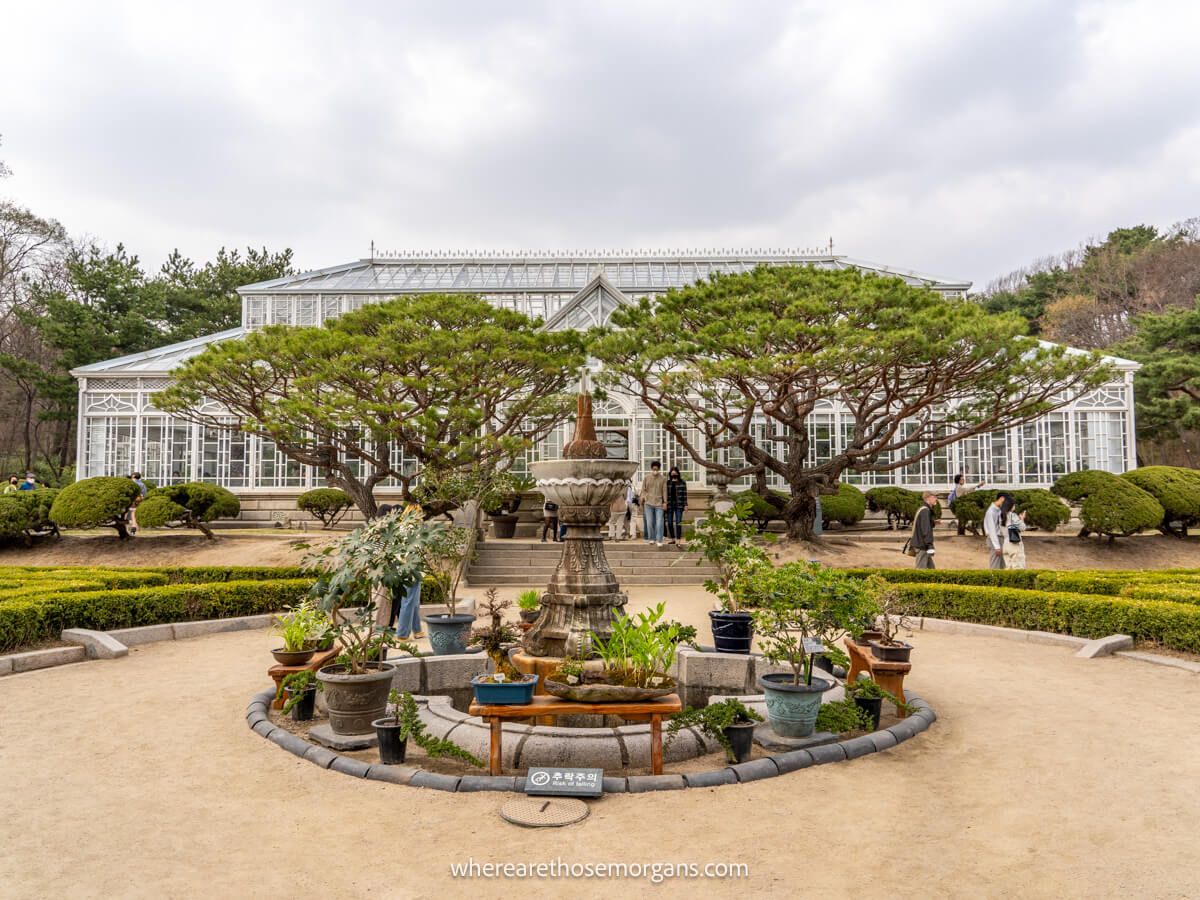While Gyeongbokgung and Changdeokgung are the most popular palaces in Seoul, Changgyeonggung Palace was the third palace compound to be built during the Joseon Dynasty and it’s often overlooked. This complex was created to serve as a royal residence rather than a seat of government, but it features a beautiful pond and an extensive garden most visitors don’t know about.
In this guide, we’re going to show you exactly what to see inside Changgyeonggung Palace including how to take a free guided tour.
Our Seoul Experience
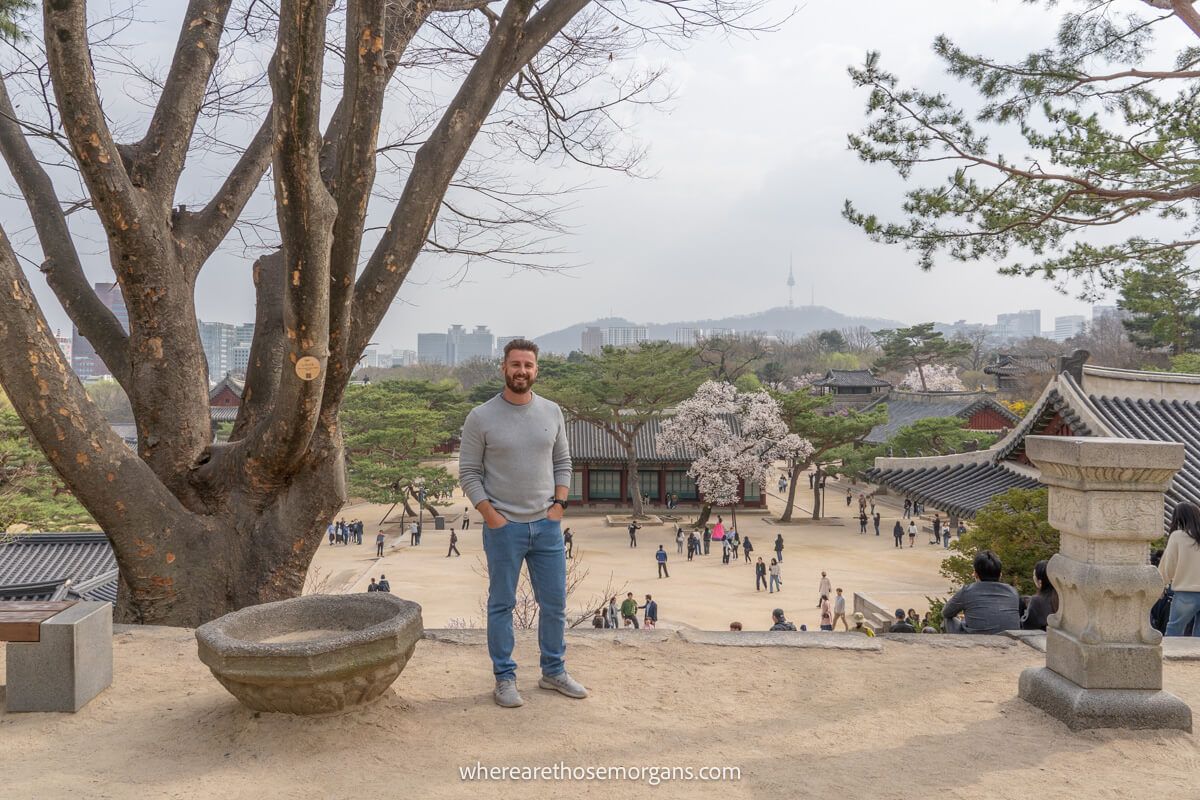
We spent 14 days exploring Seoul in March 2023. During this trip, we personally visited Changgyeonggung Palace as well as the 4 other royal palaces in Seoul. This is one of the more well known palaces in the city due to it’s location.
Changgyeonggung is easy to visit because it’s located very close to Changdeokgung Palace and we saw both in the same day. We started the day at Changdeokgung including a tour of the Huwon Secret Garden and then finished with Changgyeonggung. Read more about us.
Changgyeonggung Palace History
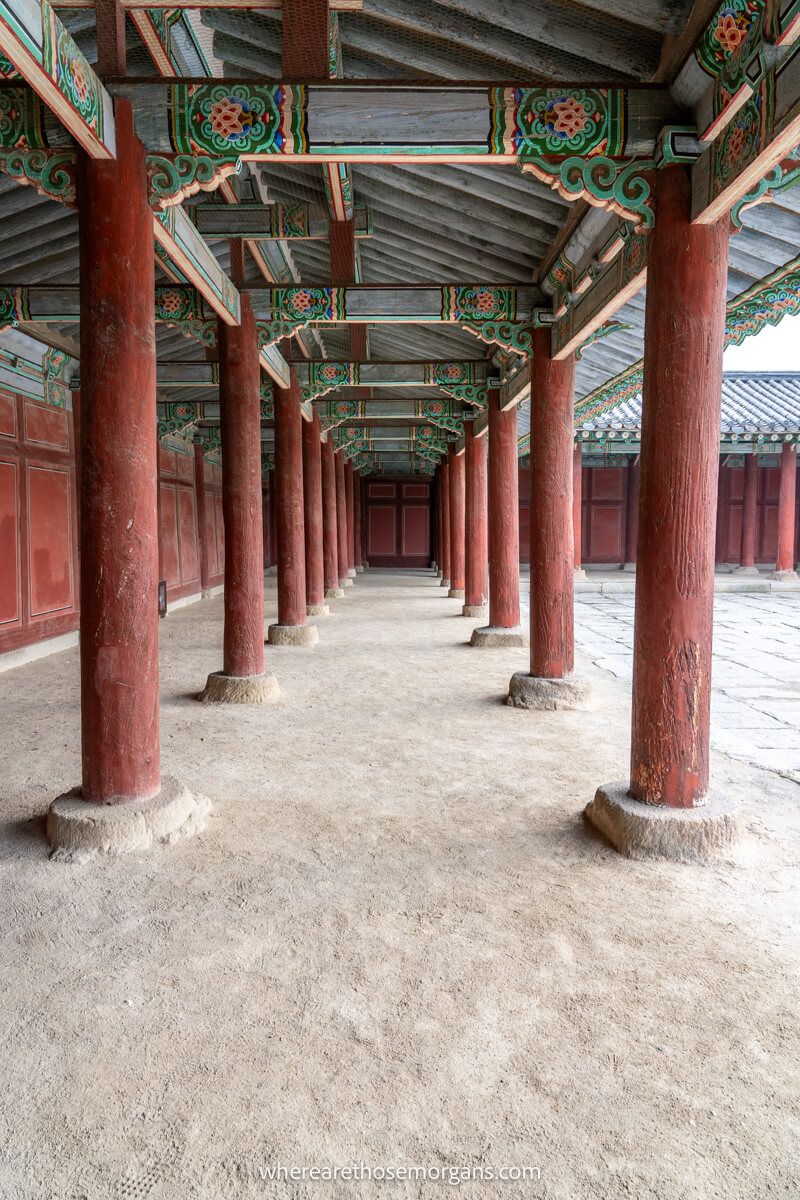
Constructed during the reign of King Seongjong (1469-1494), Changgyeonggung Palace was the third palace compound built after the completion of Gyeongbokgung and Changdeokgung. It’s often referred to as one of the eastern palaces because it’s located on the east side of the city.
Since the Korean royal family spent most of their time at Changdeokgung Palace, Changgyeonggung was purposefully positioned right next door. It didn’t originally have a garden within the grounds because the family could enjoy their privacy within Huwon Secret Garden nearby.
The complex principally served as a residence for the queens or living quarters for other members of the royal family. But this palace has a very colorful history. Unfortunately it was destroyed many times by the Japanese, but it’s also been home to a zoo and botanical garden.
The Grand Greenhouse was constructed in 1909 by Japan along with the help of a French building company. At the time of completion, it was the biggest conservatory in Asia and Korea’s first modern conservatory.
Visitor Information
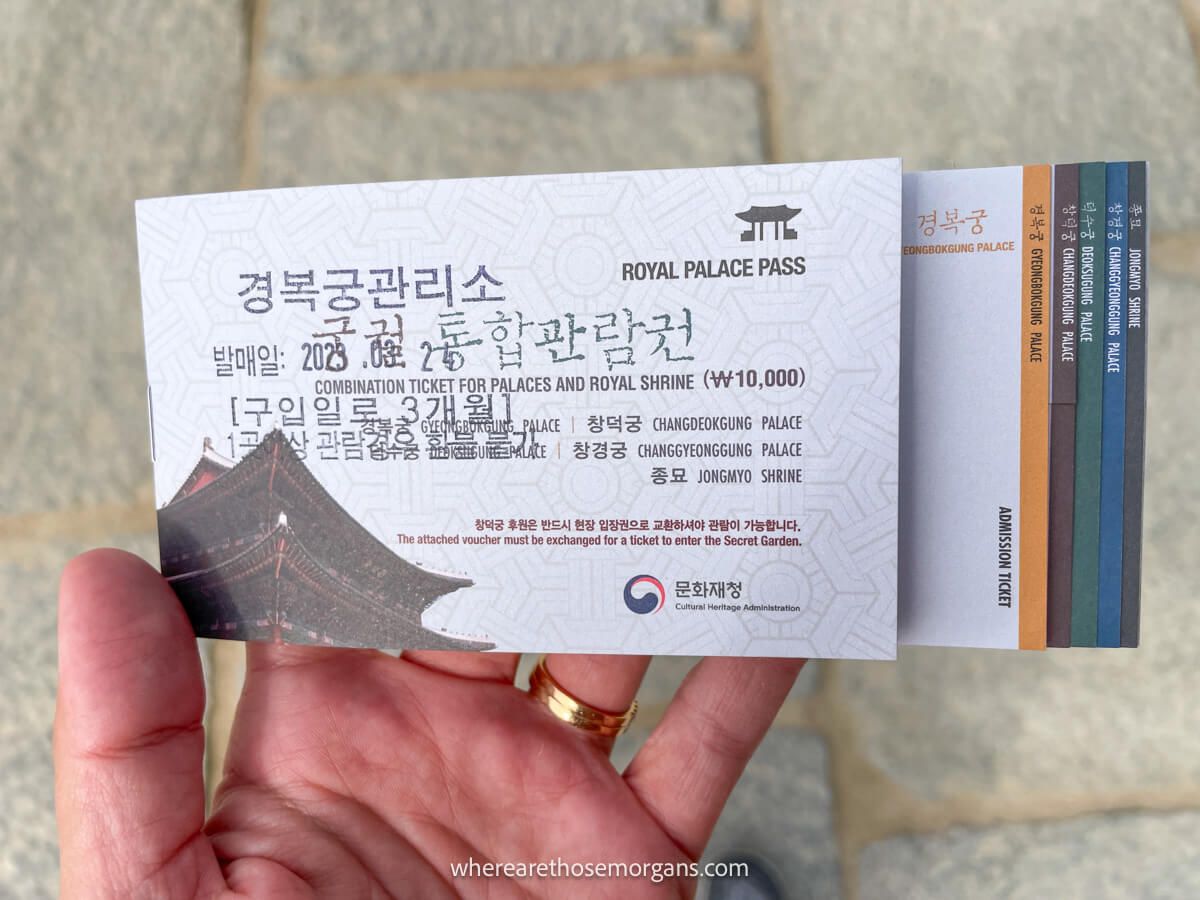
As we mentioned above, the Changgyeonggung Palace is located directly next to Changdeokgung. It’s open every day of the week from 9:00 to 21:00, but closed on Monday with last admission at 20:00.
- Address: 185 Changgyeonggung-ro, Jongno-gu, Seoul, South Korea
- Location: Google Maps
- Best subway stop: Anguk Station (line 3, exit 3) or Hyehwa Station (line 4, exit 3/4)
Admission tickets for Changgyeonggung Palace cost 1,000 KRW for adults (US$ 0.75) or 800 KRW (US$ 0.60) with groups of 10 or more. Visitors over the age of 65 and children under the age of 19 will receive free entry into the palace. You can also visit for free on Culture Day, which is the last Wednesday of every month.
We think the easiest way to purchase tickets is on site, but if you plan to visit all 5 of Seoul’s royal palaces, you should consider the royal palace pass. This is what we used to visit Changgyeonggung Palace.
The royal palace pass costs 10,000 KRW (US $7.53) and it’s valid for three months from the date of purchase. This pass can only be purchased from the sites listed below:
- Gyeongbokgung
- Changdeokgung
- Changgyeonggung
- Deoksugung
- Jongmyo Shrine
It’s a good opportunity for those who want to visit numerous palaces in the city because it will save you a little bit of money. Additionally, it also saved us some time by not having to wait in a long ticket line.
Hanbok Rentals
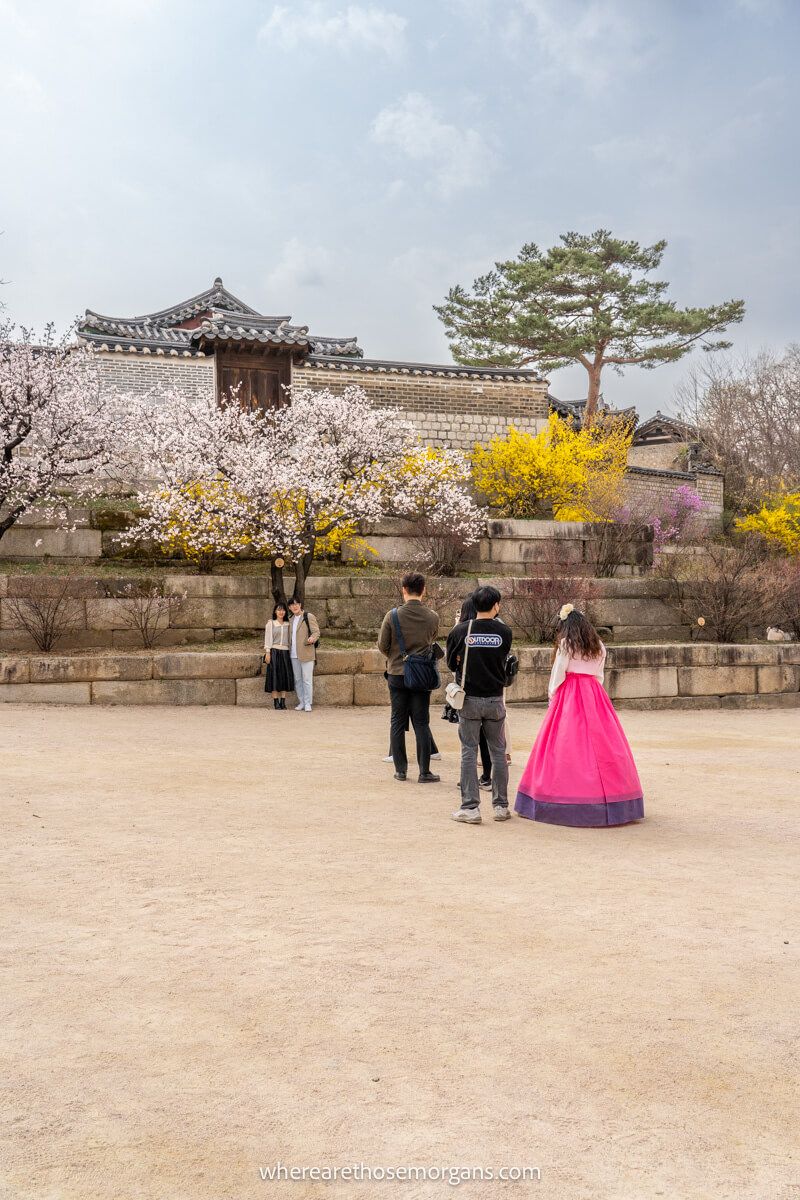
Admission to Changgyeonggung Palace is free for anyone wearing a hanbok. This is traditional Korean clothing and it’s very common for people to have their hair done for the occasion as well.
When you visit the palace, you can expect to see numerous tourists dressed in hanboks. If you want to rent your own, this Hanbok rental is a very popular option with Klook. Hanboks are typically rented by the hour or per day.
Travel Tip: The pick up location to the rental company we provided is sandwiched between both Gyeongbokgung, Changdeokgung and Changgyeonggung Palace. So you could visit all 3 palaces in the same day if you planned well.
Changgyeonggung Tours
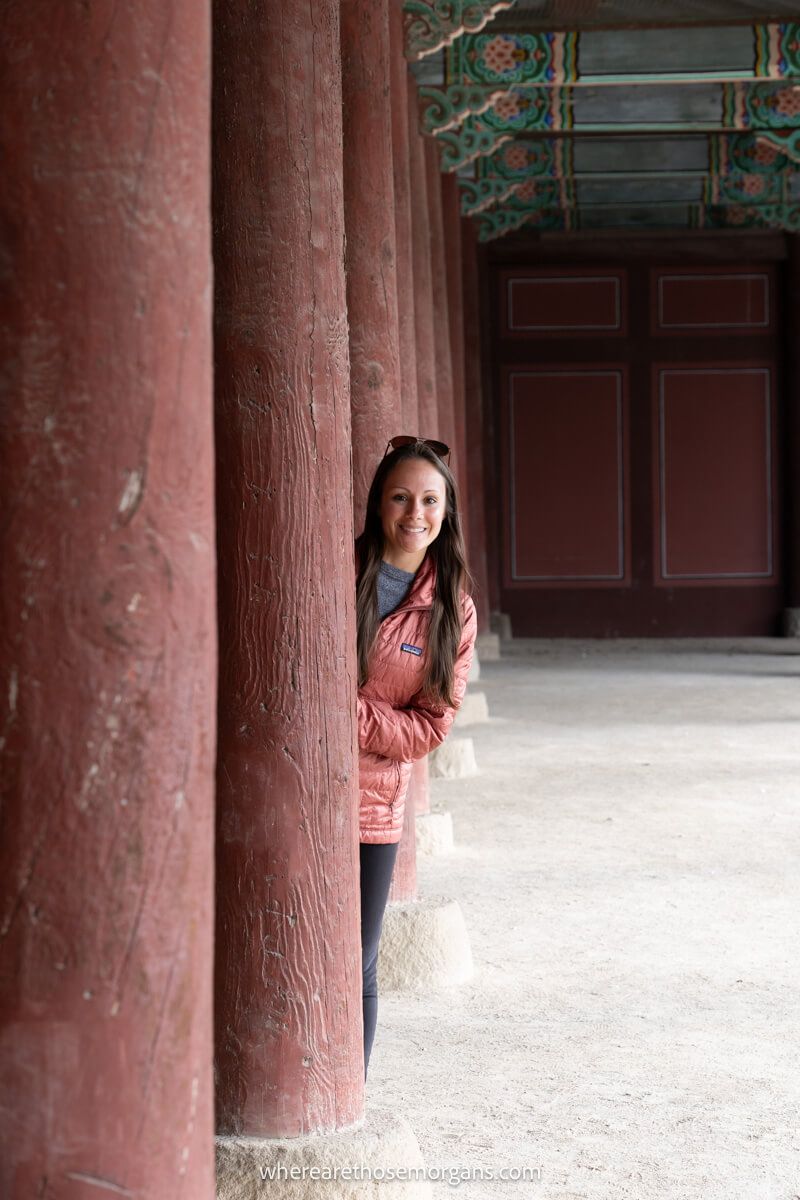
When we visited, we used the free informational brochure to walk around and learn about the various buildings. There are also several exhibits placed throughout the grounds or you can rent an audioguide at the main entrance for additional information.
But if you want to learn from a local guide, you can attend one of the free 60 minute guided tours offered in various languages. Here are the guided tour times:
- Korean: 10:30, 11:30, 13:00, 13:30, 14:30, 15:30, 16:30
- Chinese: 9:30, 15:00
- English: 11:00, 16:00
- Japanese: 10:00, 14:00
If you can’t visit during the free guided tour hours, you can book a tour with a third party company. Many of these tours include admission to the palace as well as some of the best things to do in Seoul.
Here are highly rated tour options:
- Changgyeonggung Night Tour – Your chance to explore the grounds at night and learn about the dark history of the palace
- Palace and Night Market Tour – A night tour of Changgyeonggung Palace followed by a guided tour of a popular night market
- Dark Side of the City – Explore Korea’s dark history as you hear ghost stories. This tour explores three of Seoul’s five palaces.
10 Best Things To Do In Changgyeonggung Palace
There are many beautiful sights to see when visiting including the expansive gardens. This complex is smaller compered to the bigger palaces, but if you want to explore the gardens, you’ll need to plan for extra time in your Seoul itinerary.
Most of the buildings are centralized in the middle of the complex, while the gardens expand out from the sides. So you can visit most of this palace without venturing into the gardens if you just want to see the main highlights.
Here is what you should see at Changgyeonggung Palace:
1. Honghwamun Gate
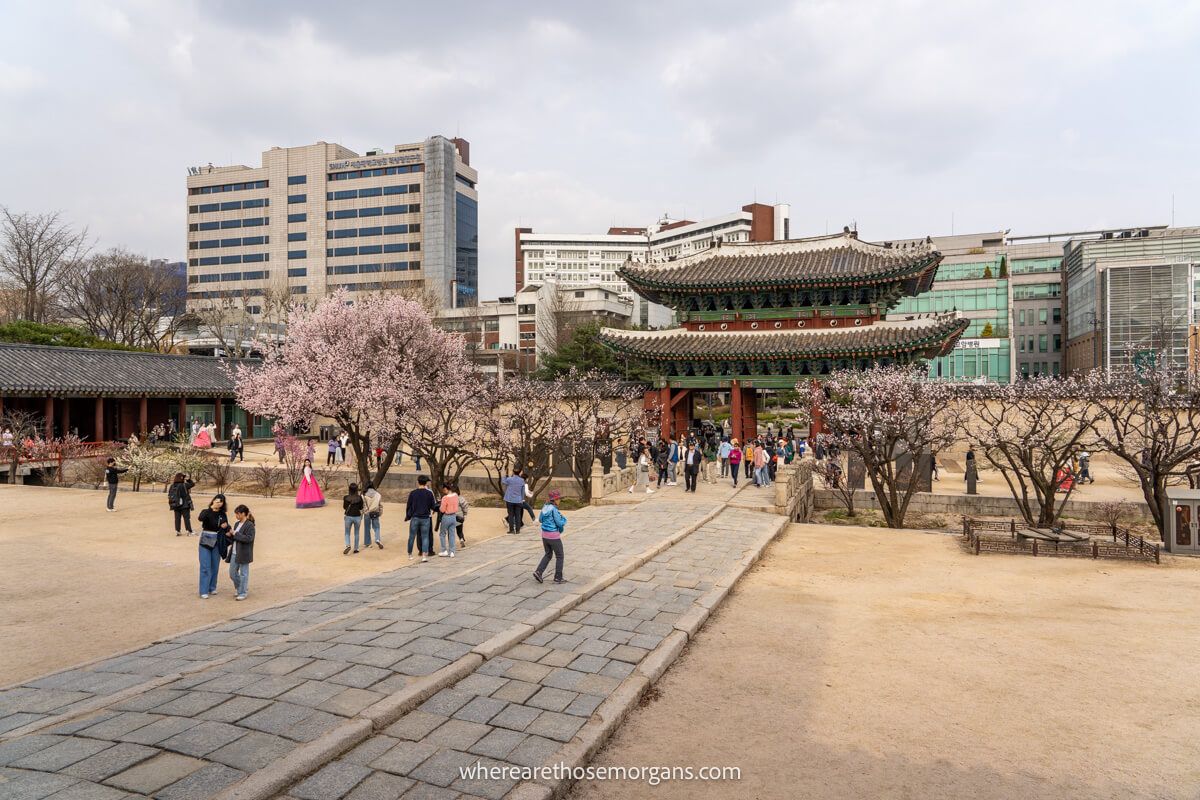
The Honghwamun Gate is the main gate of the Changgyeonggung Palace. The translation literally means promoting harmony. Similar to other palace structures, it was destroyed by the Japanese invasion of 1592-1598, but the gate was rebuilt a few years later in 1616.
This gate was important throughout Korean history because this is where the king historically met with the people. In 1750, King Yeongjo spoke with the public about the taxation system before the enactment of the Equal Military Services Act. And in 1795, King Jeongjo handed out rice to those less fortunate.
Travel Tip: Most visitors enter the palace through Honghwamun Gate so it’s often a busy spot. If you want to get away from the crowds, head farther into the complex.
2. Okcheongyo Bridge
Every royal palace in Seoul contains a natural steam with a bridge built over it. After walking through Honghwamun Gate, visitors will make their way across Okcheongyo Bridge.
Built in 1484, the water in the stream under Okcheongyo Bridge originates from nearby Eungbongsan Mountain. The water follows a path south towards to the bridge passing both Jondeokjeong Pavilion of Changdeokgung Palace and Chundangji Pond of Changgyeonggung Palace.
It’s one of the most well-preserved bridges within the Seoul palaces so this is one sight you don’t want to miss. In March when we visited, the cherry blossoms were just starting to bloom and many visitors were taking photos of the trees and bridge together.
Travel Tip: Under the arch of Okcheongyo Bridge, there is a face of a goblin carved into the stone. This goblin helps to protect the palace against evil spirits entering the grounds through the river.
3. Myeongjeongjeon Hall
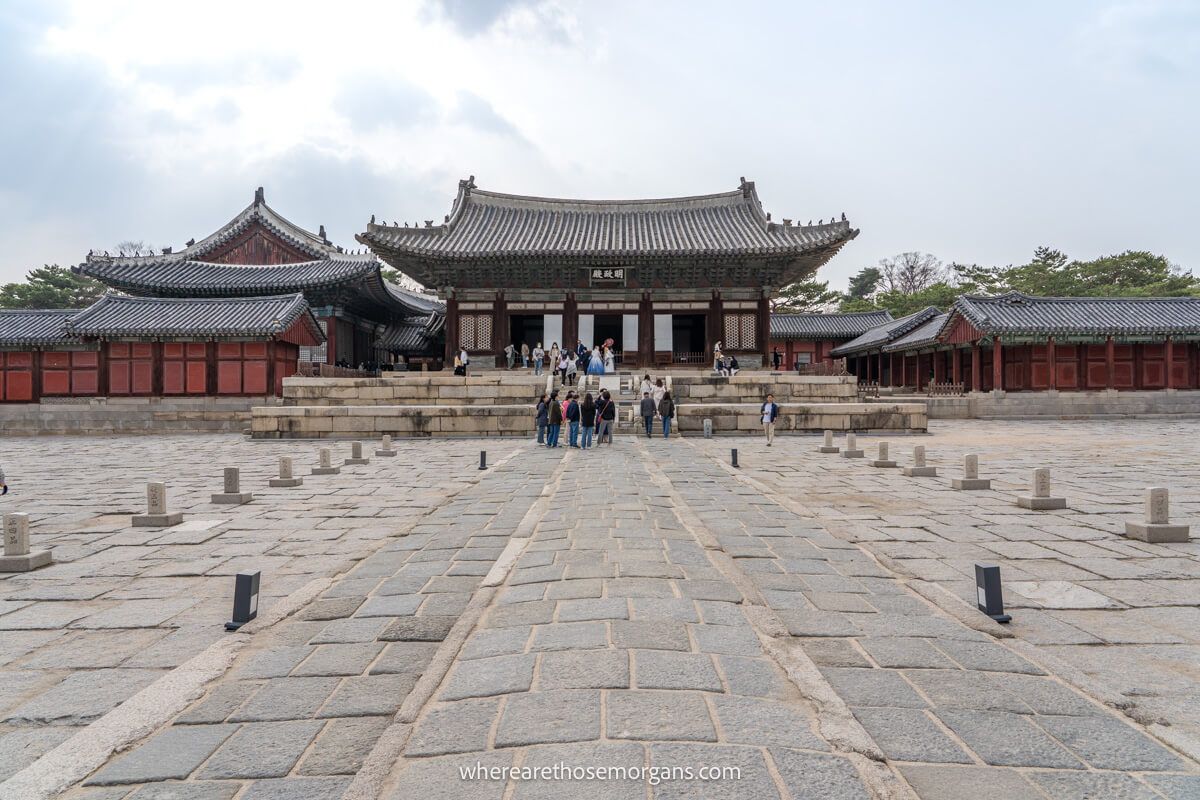
Myeongjeongjeon Hall is the main hall inside Changgyeonggung Palace and it’s the oldest throne hall in Korea. This is where royal rituals took place including the king’s enthronement, state examinations, royal receptions and congratulatory ceremonies.
Originally built in 1484, Myeongjeongjeon Hall is smaller than the throne halls at Gyeongbokgung Palace and Changdeokgung Palace because it was originally constructed to be the queen’s residence. If you notice in our photo above, the building is a single story rather than a large structure with high ceilings.
Sadly, this hall was destroyed in the Japanese invasion of 1592. But it was rebuilt in 1616. One of the most important ceremonies from the Joseon period was the wedding ceremony between 66 year old King Yeongjo (1724-1776) and 15 year old Queen Jeongsu’s (1745-1805) in 1759.
Inside this stunning building, you’ll see the king’s throne as well as an important folding screen showcasing the sun, moon and five peaks. The sun and moon refer to the king and queen while the five peaks represent the five elements in addition to the entire nation.
Travel Tip: During royal rituals, government officials would stand next to the corresponding stone marker on the floor that matched their rank. You’ll see these stones in all of Seoul’s royal palaces.
4. Sungmundang Hall
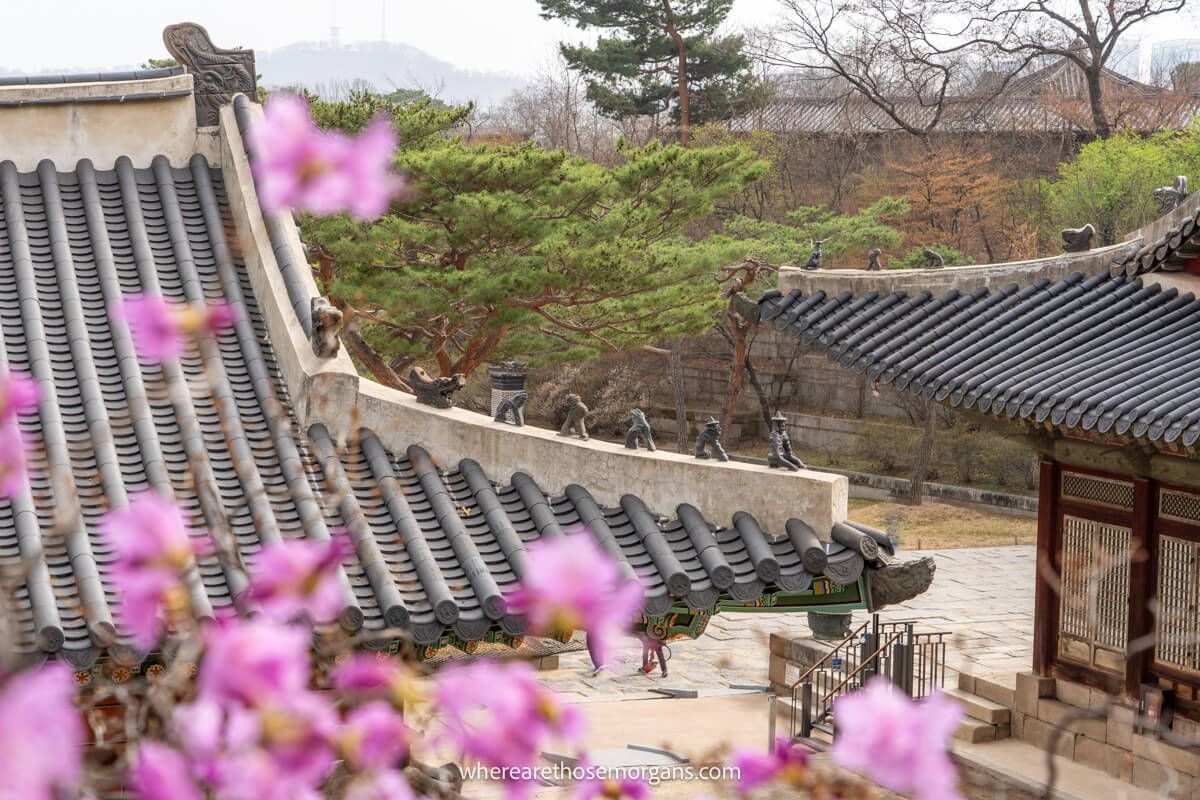
This intricate hall was used as the king’s study. Sungmundang translates to respect learning and this is was a place where the king often worked or studied. It’s also documented that the 21st King Yeongjo taught students from the Seonggyungwan Academy and gave lectures about Confucian classics.
Travel Tip: You’ll find a signboard in Sungmundang Hall which is handwritten by King Yeongjo himself.
5. Binyangmun Gate
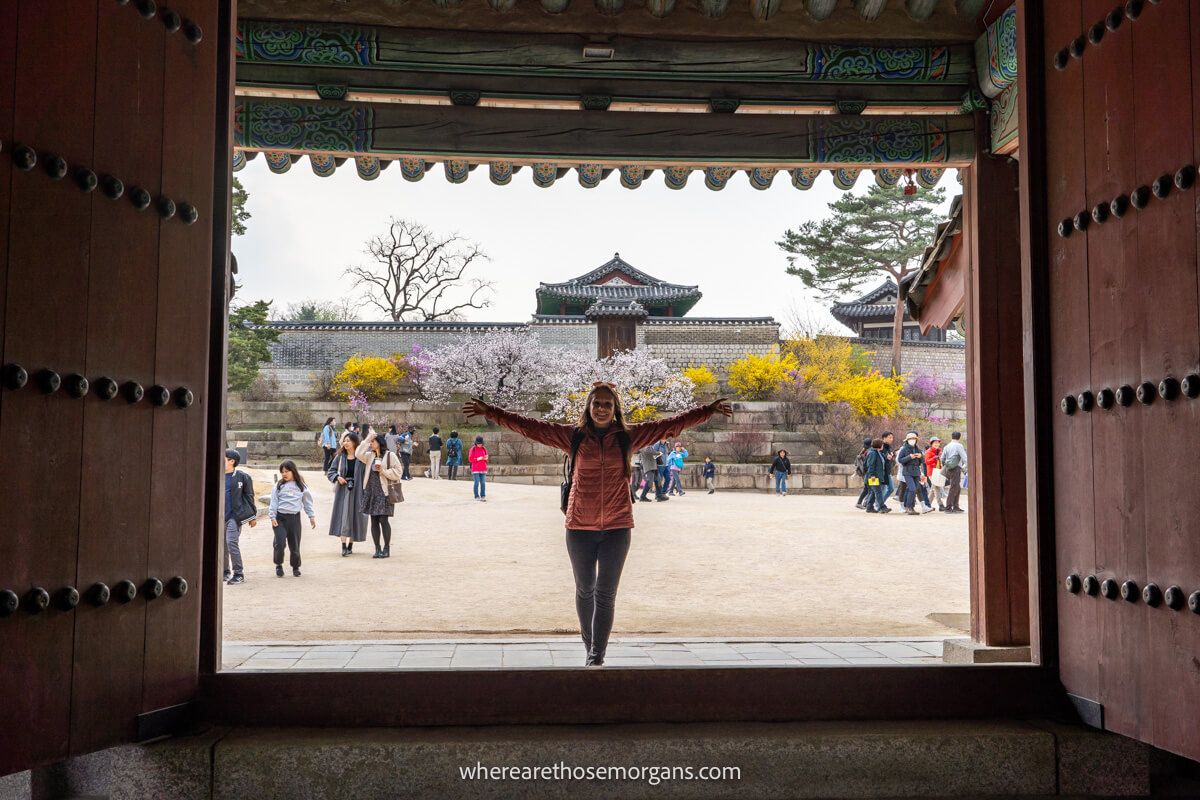
One of the most popular places for photography inside Changgyeonggung Palace, Binyangmun Gate connected the king’s official space to his private quarters. This main gate was the entrance door to the king’s private area so access through this gate was strictly prohibited. The gate we see today was rebuilt in 1986 after the Japanese invasion.
6. Chundangji Pond
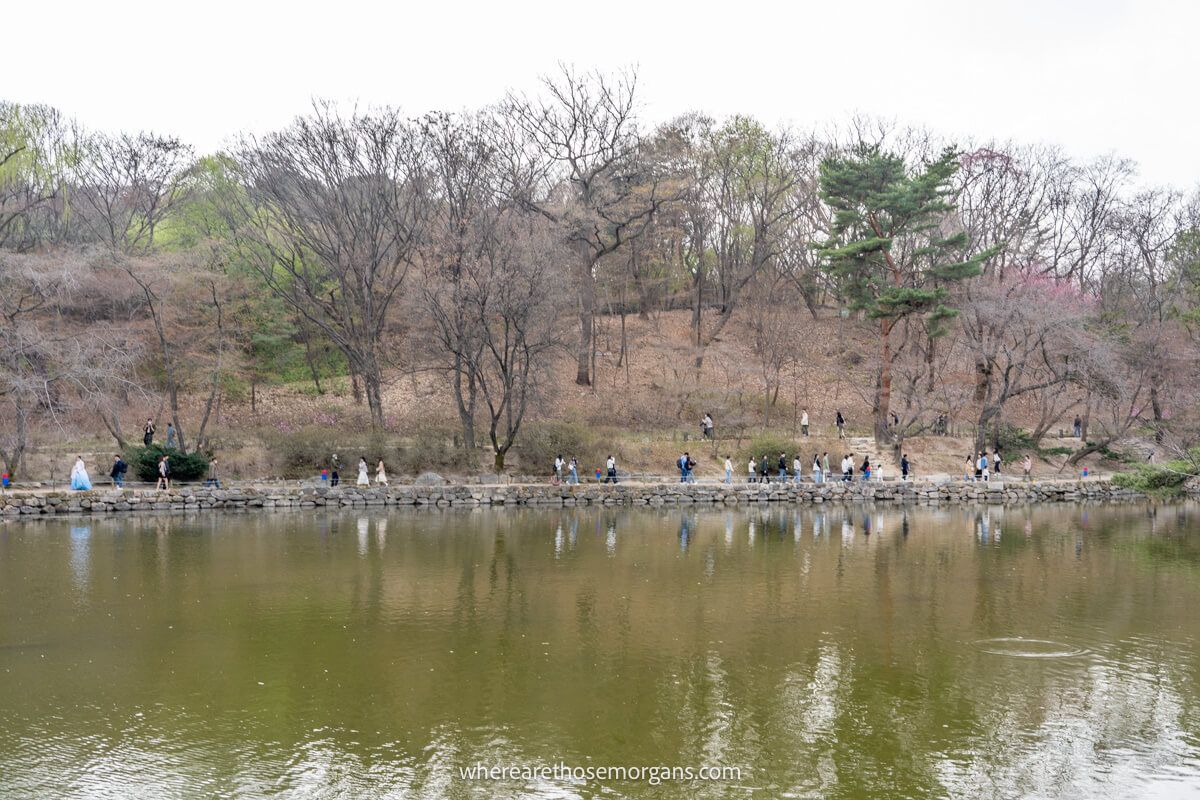
Today, Chundangji Pond at Changgyeonggung Palace is divided into two main sections. The smaller upper section of the pond was the original location while the lower section was used for cultivating vegetables.
However, the large pond we can see today was created in 1909 by the Japanese, but it was renovated in 1986 to showcase the original Korean style pond. Chundangji Pond in located the back of the complex near the gardens of the palace.
This area was very busy when we visited with people enjoying the flowers in bloom and walking the perimeter of the pond. We imagine this pond is very beautiful later in year when the vegetation has finally grown lush and green.
Travel Tip: Chundangji Pond now serves as an important avian refuge in Seoul, but these grounds were originally rice paddies which the king plowed himself.
7. Octagonal Seven Story Stone Pagoda
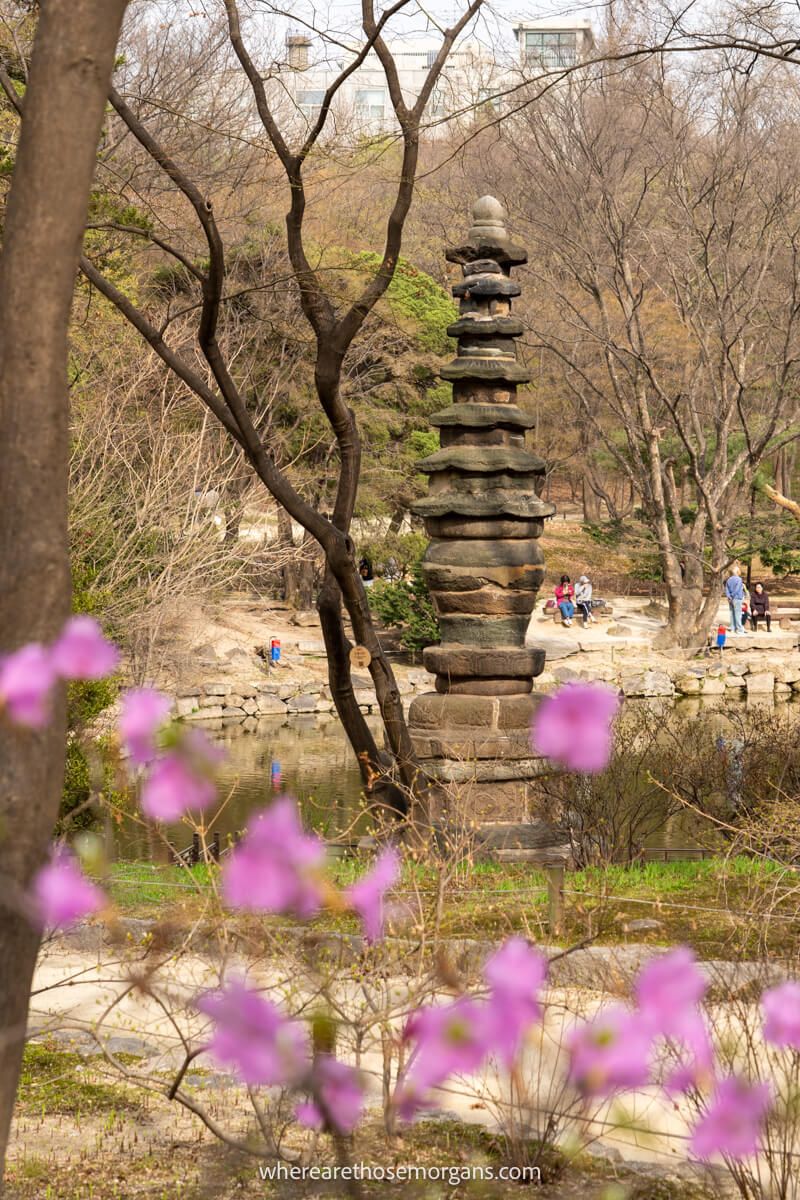
Located directly next to Chundangji Pond, an octagonal stone pagoda with seven stories was originally built in 1470. It’s rumored to have been purchased from a merchant during the Chinese Ming Dynasty.
Now classified as an official Korean treasure, the pagoda platform features a lotus pedestal and each side is decorated with flowers. Each tier is also carved with various intricate designs so we highly recommend you try to find this stunning pagoda within Changgyeonggung Palace.
8. The Placenta Chamber
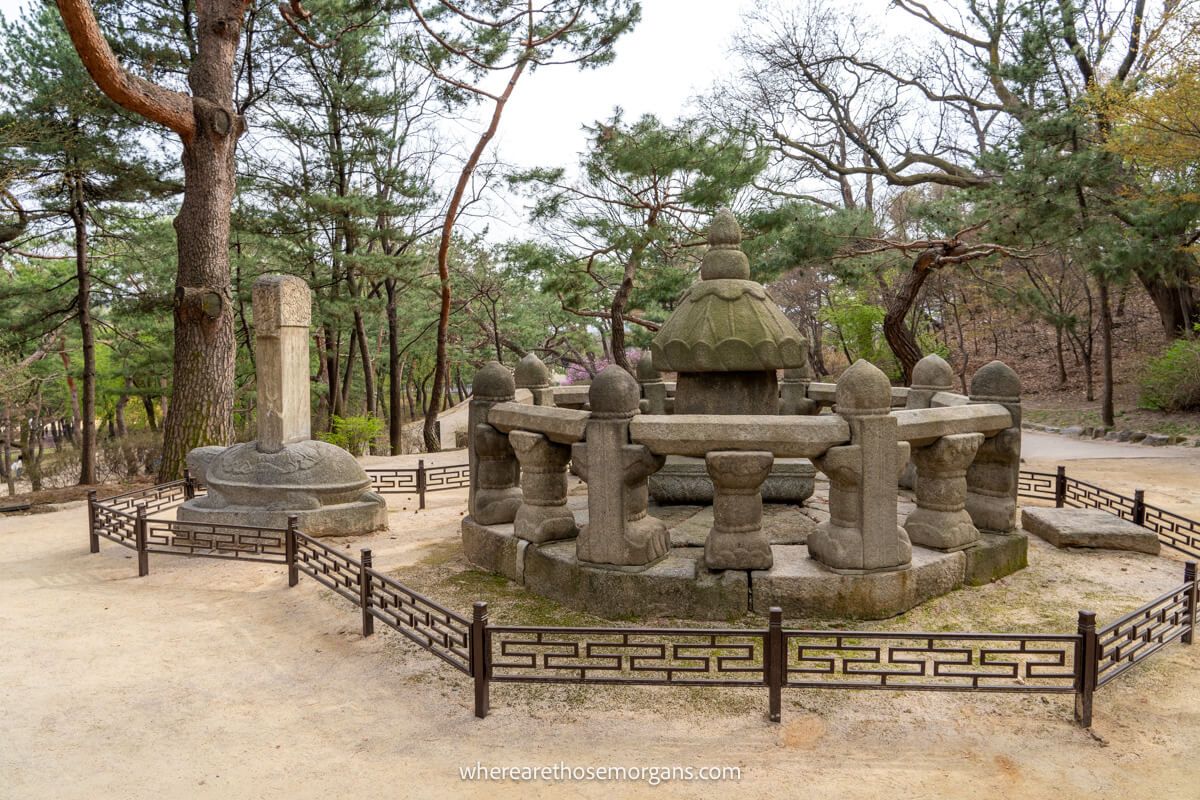
One of the most interesting things to see at Changgyeonggung Palace is the placenta chamber and stele of King Seongjong. When a new baby was born into the Joseon Dynasty (1392-1910), his or her naval string was kept in a very special jar and then buried in a placenta chamber.
This represented good prosperity for the nation and the baby’s health. But during the Japanese colonial period, many of the placenta chambers were moved to the Seosamneung Royal Tombs.
So while the placenta chambers have since been removed, you can still see the stone structure for King Seongjong’s which was relocated to this spot in 1928.
9. Grand Greenhouse
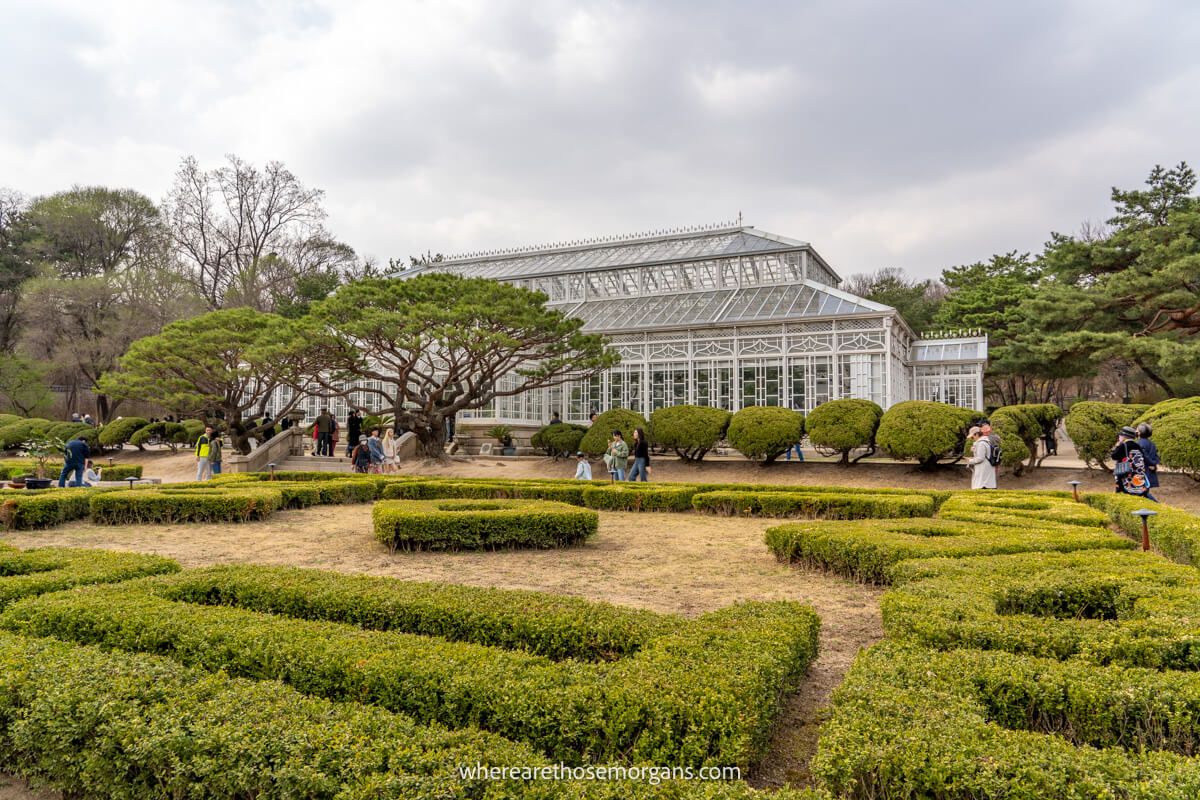
Another unique thing to see inside Changgyeonggung Palace is the Grand Greenhouse. Originally built in 1909, this beautiful building was Korea’s first western style greenhouse. It was built alongside a zoo by the Japanese colonial government under the rule of Emperor Sunjong who resided at Changdeokgung Palace throughout this turbulent period.
But today, the Grand Greenhouse is filled with native and rare tropical plants so we recommend you stop by when visiting the palace. The plants inside the greenhouse have informational markers with both Korean and English translation.
Travel Tip: The gardens in and around the Grand Greenhouse are a very popular spot for photos so it can be extremely busy in this general area.
10. Changgyeonggung Palace Paths
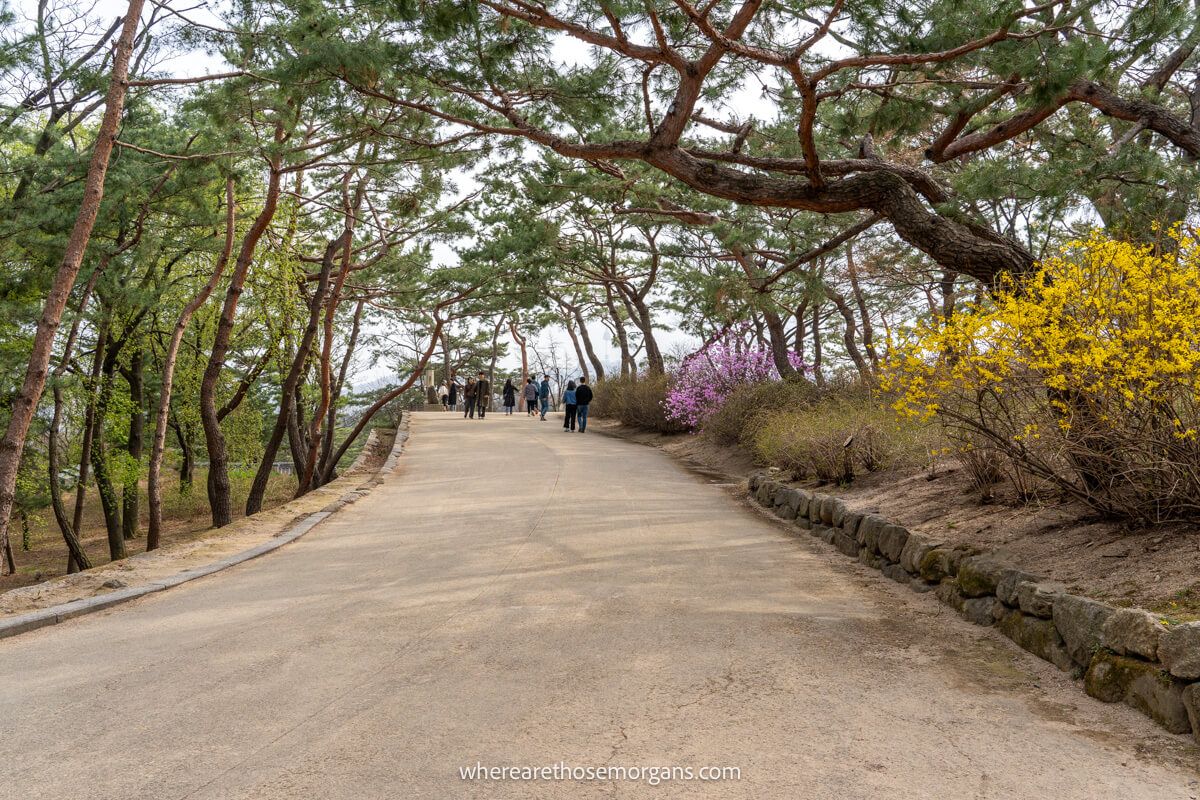
While the paths are not an official tourist destination, we think Changgyeonggung Palace is one of the best destinations to enjoy a leisurely walk in Seoul. The palace itself is quite small compared to the large grounds, but there are extensive paths leading into the gardens so you have a lot of options if you want to walk around.
Many of the paths inside the complex are paved so any visitors with strollers or wheelchairs will easily get around. We thought this palace was a welcome relief from the hustle and bustle of both Gyeongbokgung or Changdeokgung. So if you want to get away from the crowds, head to Changgyeonggung.
The Morgan Conclusion
As one of the more well known palaces in Seoul, Changgyeonggung is unique because it features an extensive garden, a gorgeous pond and a western style greenhouse. Visitors can also take free 60 minute walking tours if they want to learn more about the complex.
So is Changgyeonggung Palace worth visiting?
Yes, the Changgyeonggung Palace is worth visiting because the palace complex features a beautiful large garden space. And since this palace is located directly next to Changdeokgung, you can easily visit both in one day. If you can’t get tickets for the Huwon Secret Garden, this would be a great alternative.
We like Changgyeonggung because the buildings of the palace are not spread out as much compared to the bigger palaces so it’s easier to visit. In total, we spent about 2.5 hours inside the complex, but if you want to visit the gardens, you might need to plan for more time. We recommend you see Chundangji Pond, the Placenta Chamber and the Grand Greenhouse because they are very unique.
Many visitors also flock to Changgyeonggung Palace because this is where the Crown Prince Sado was murdered. There are numerous theories, but it was rumored the prince was mentally unwell and driven to madness by his father the king. This gruesome story is often discussed on the paid guided tours we included above.
Our Changgyeonggung Palace Photos
We enjoyed our visit to the palace and took many photos. Here are a few of our favorites so you know exactly what to expect:
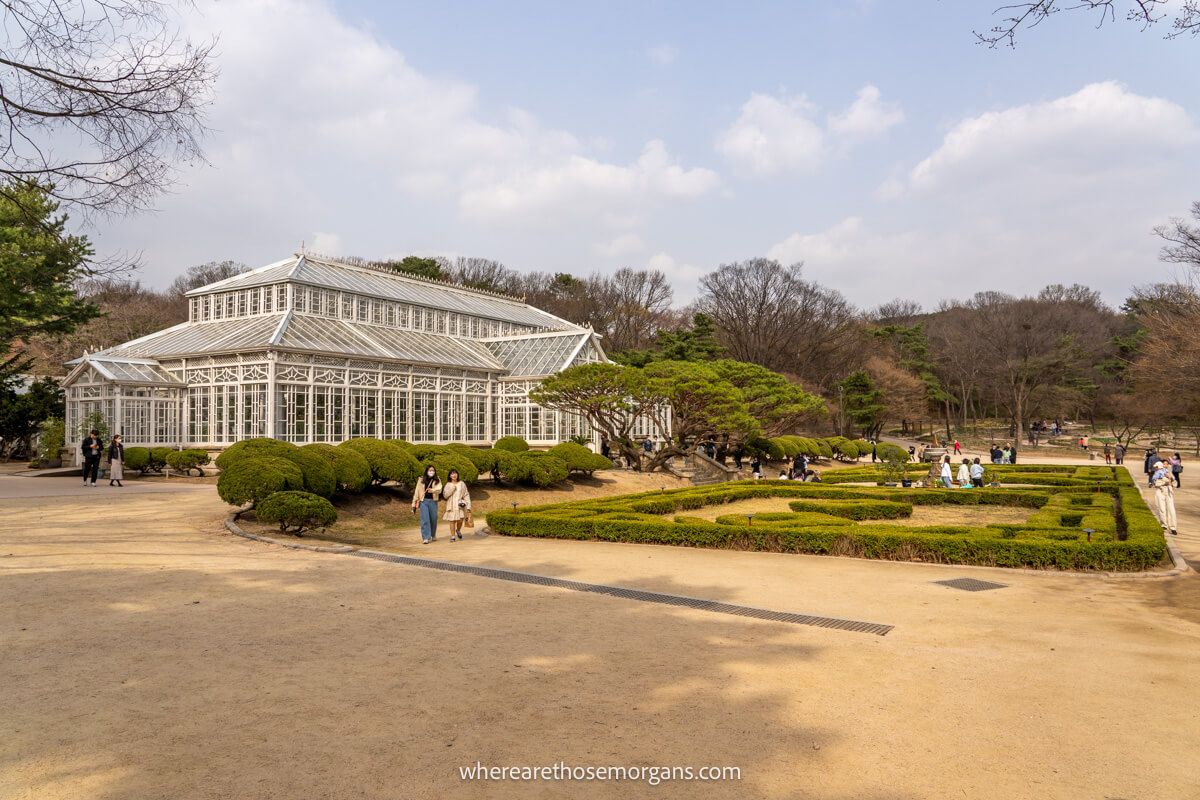
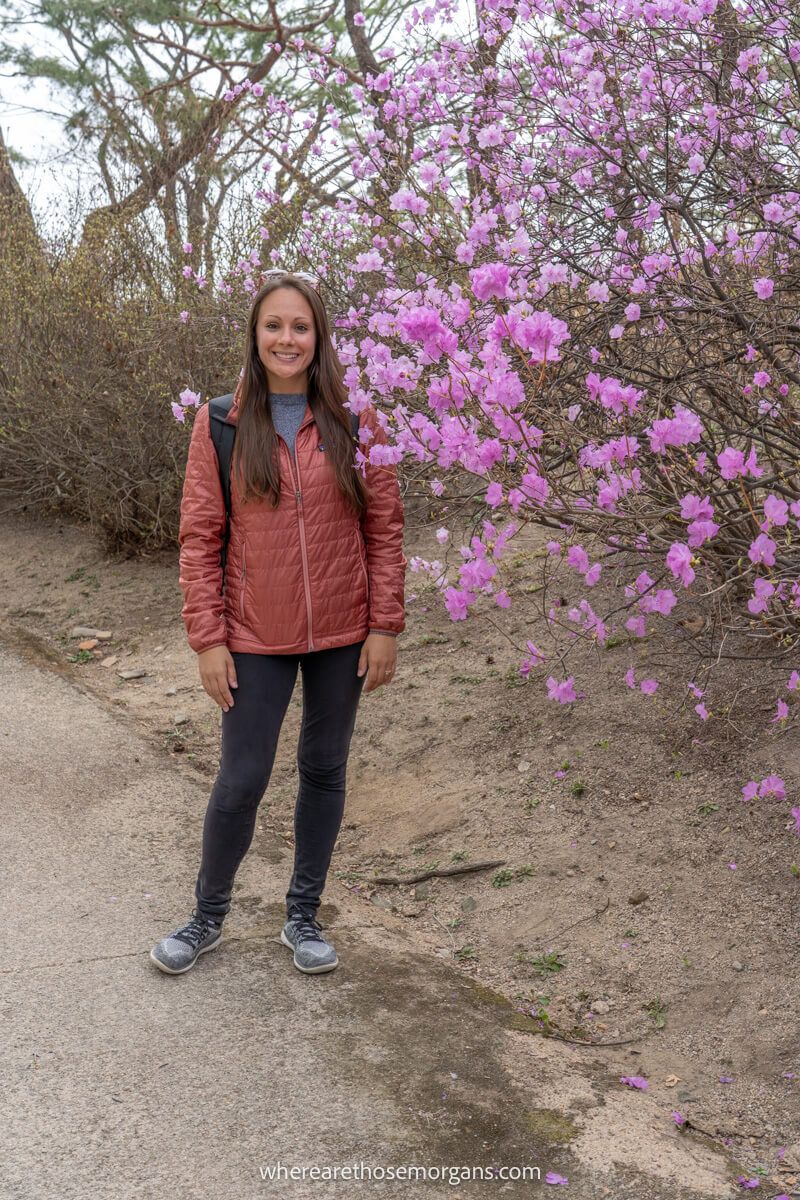
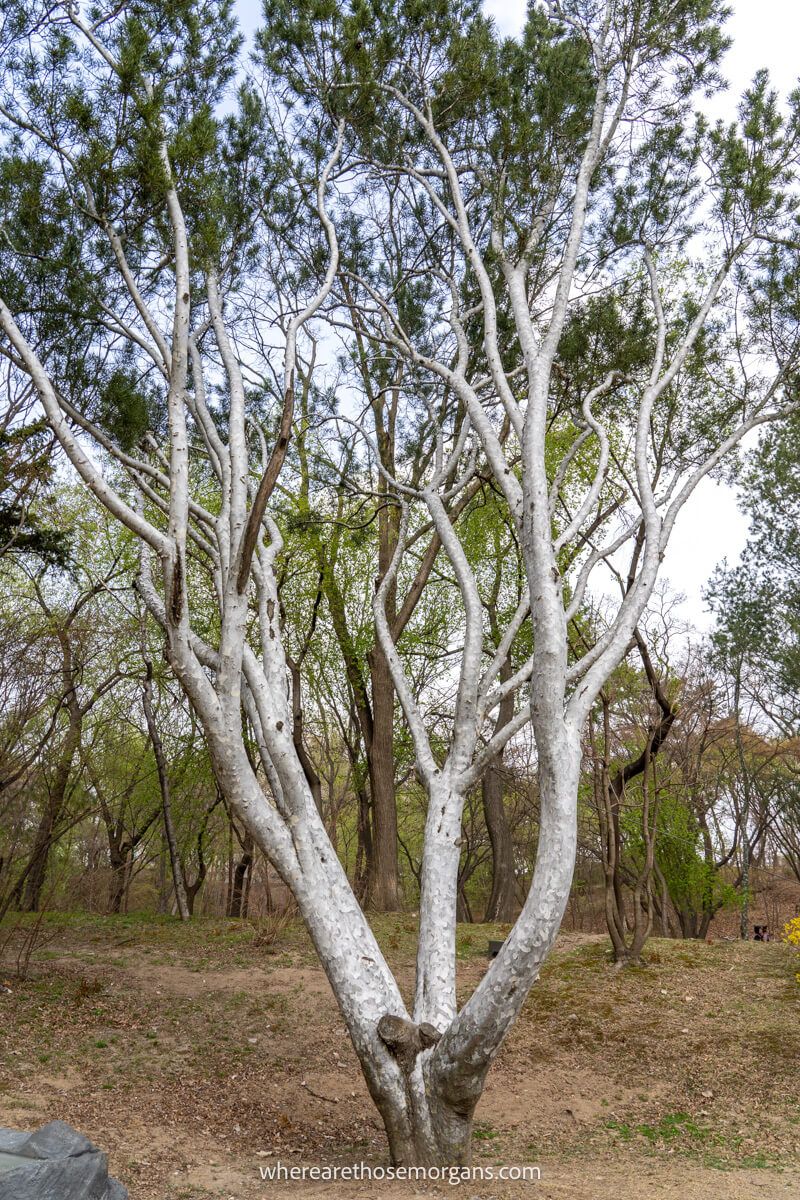
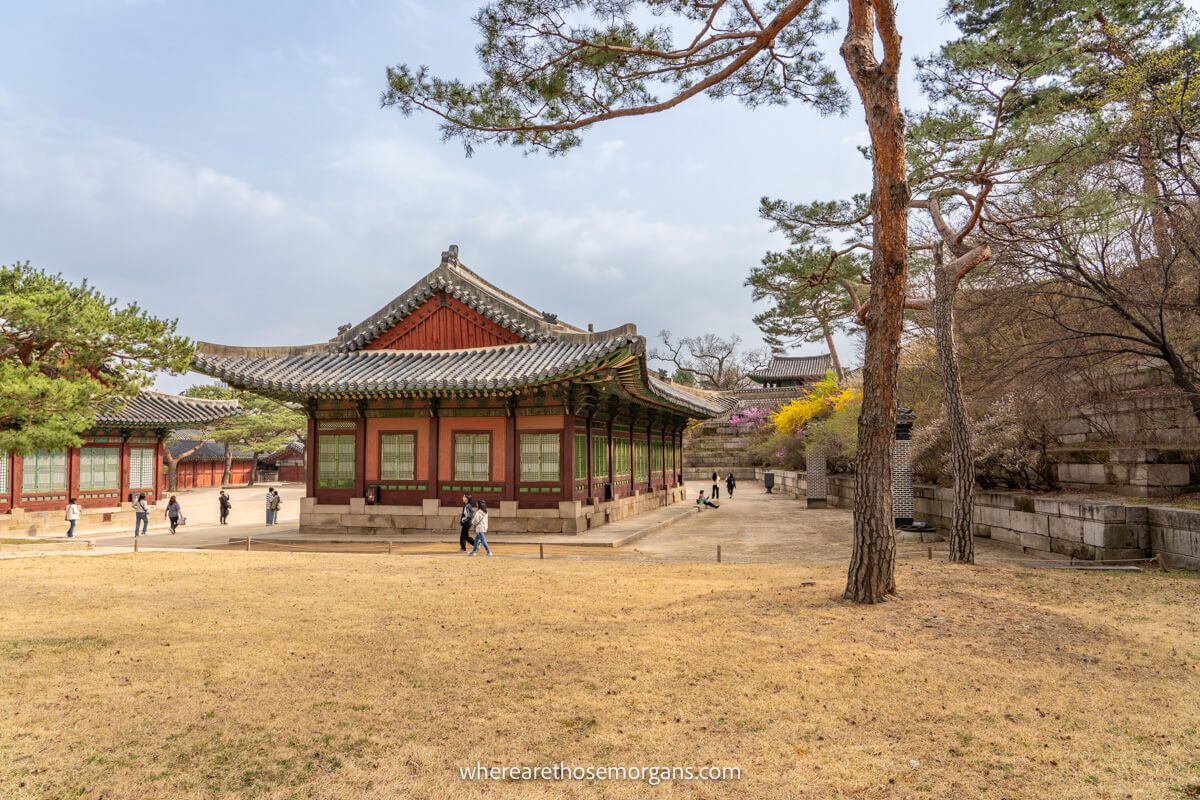
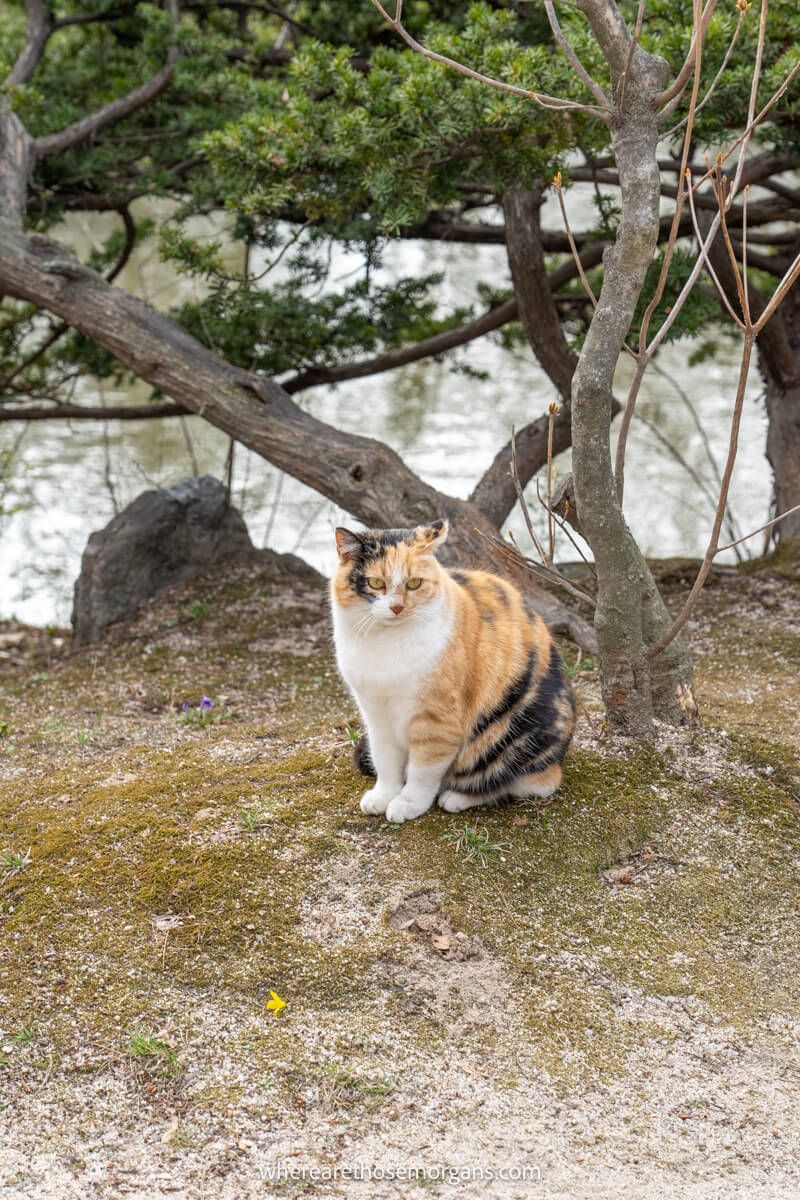
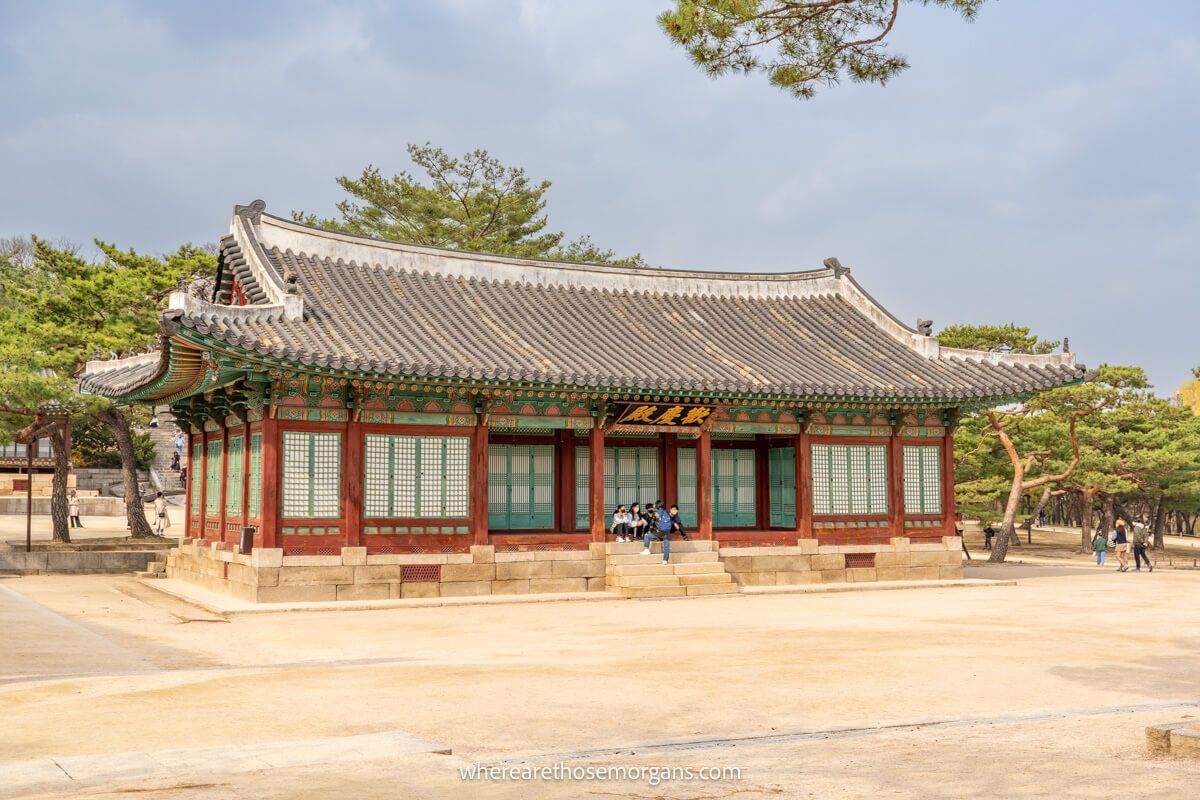
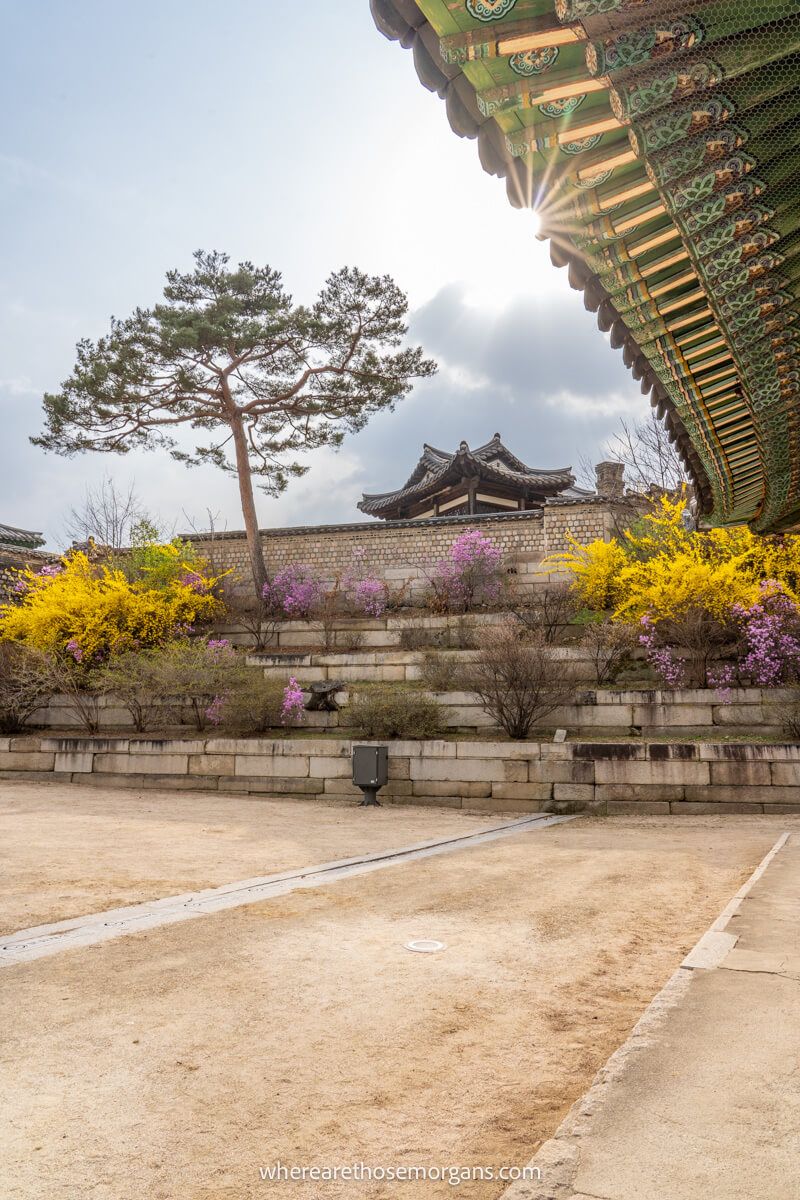
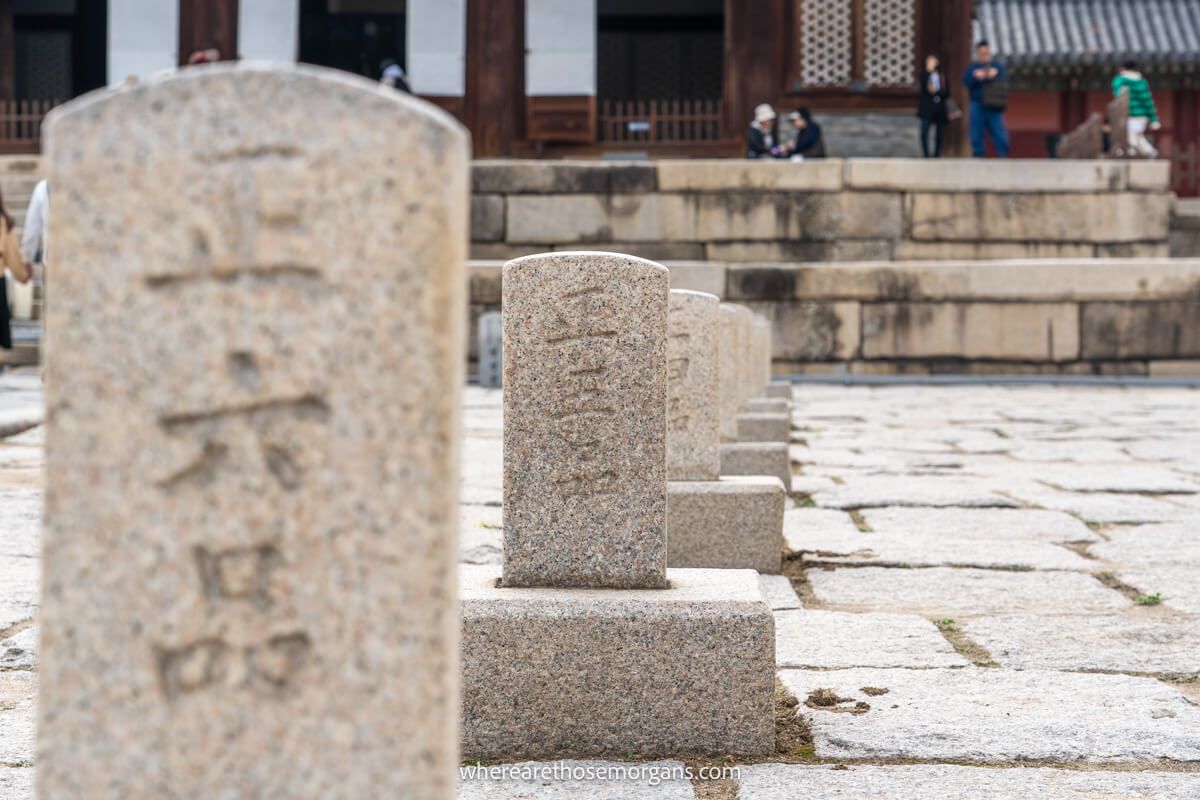
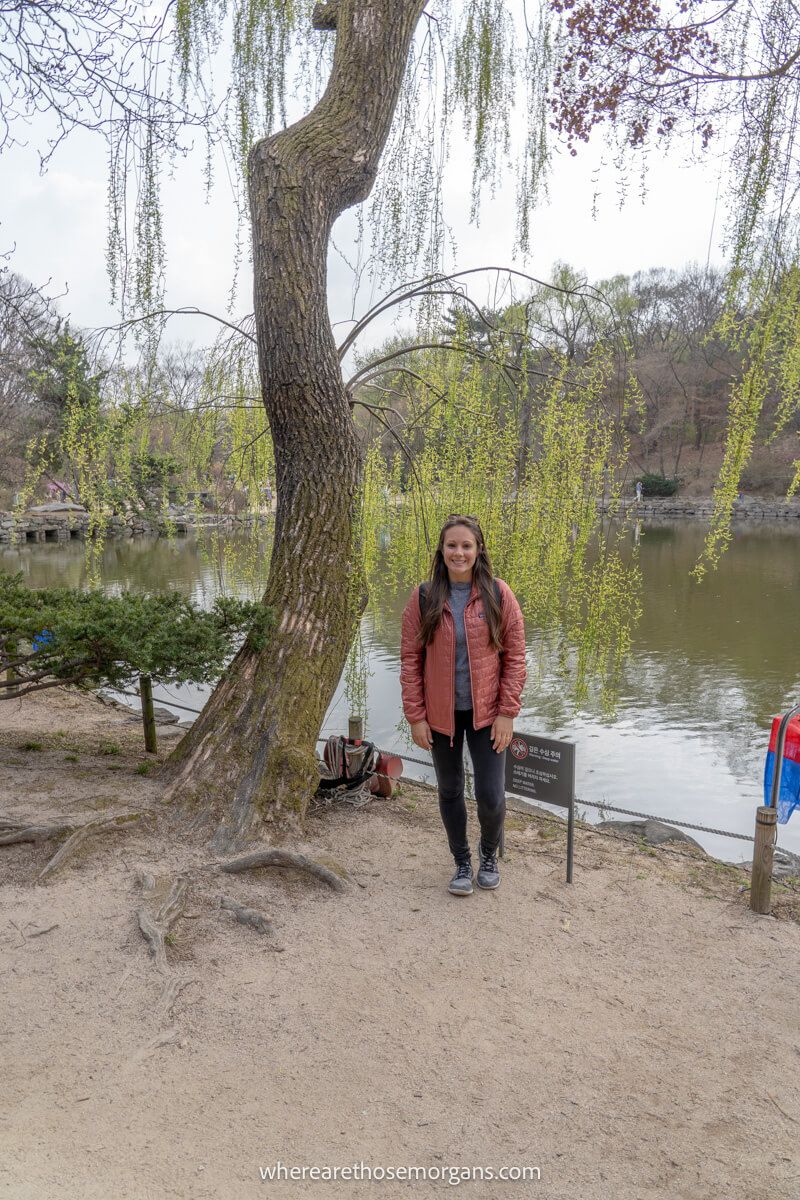
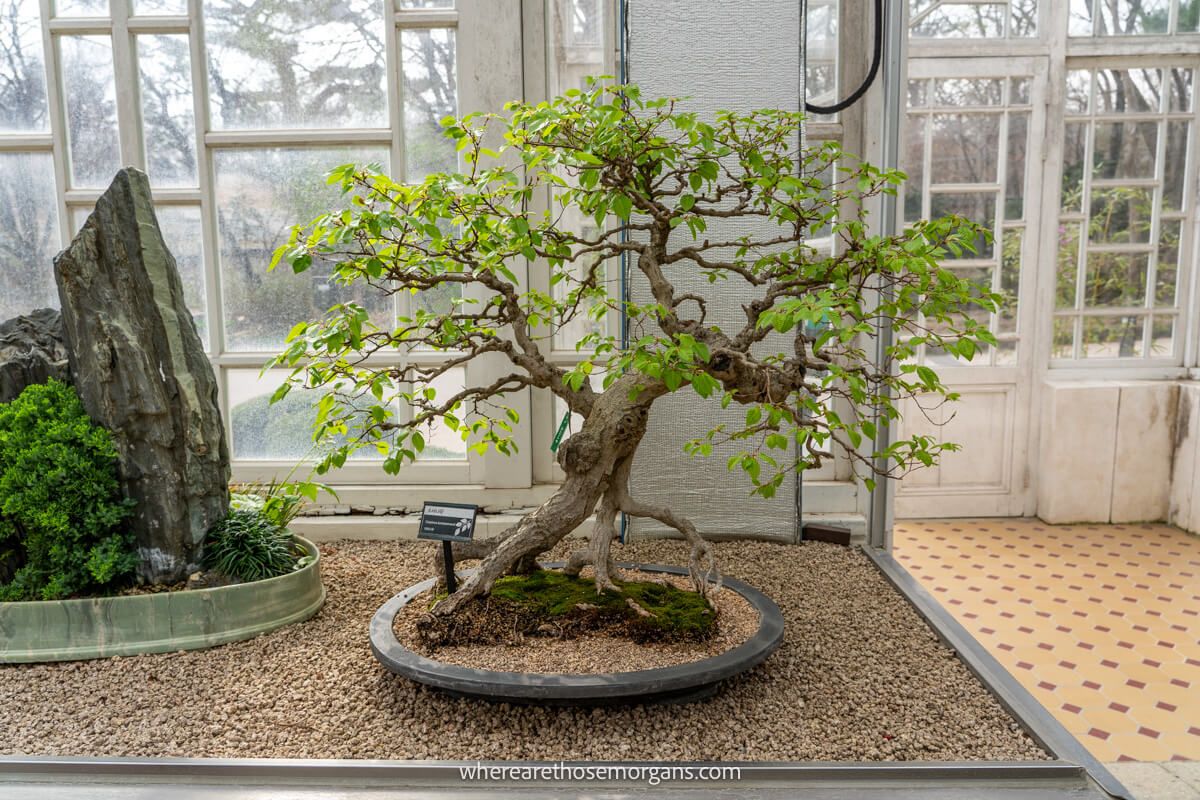
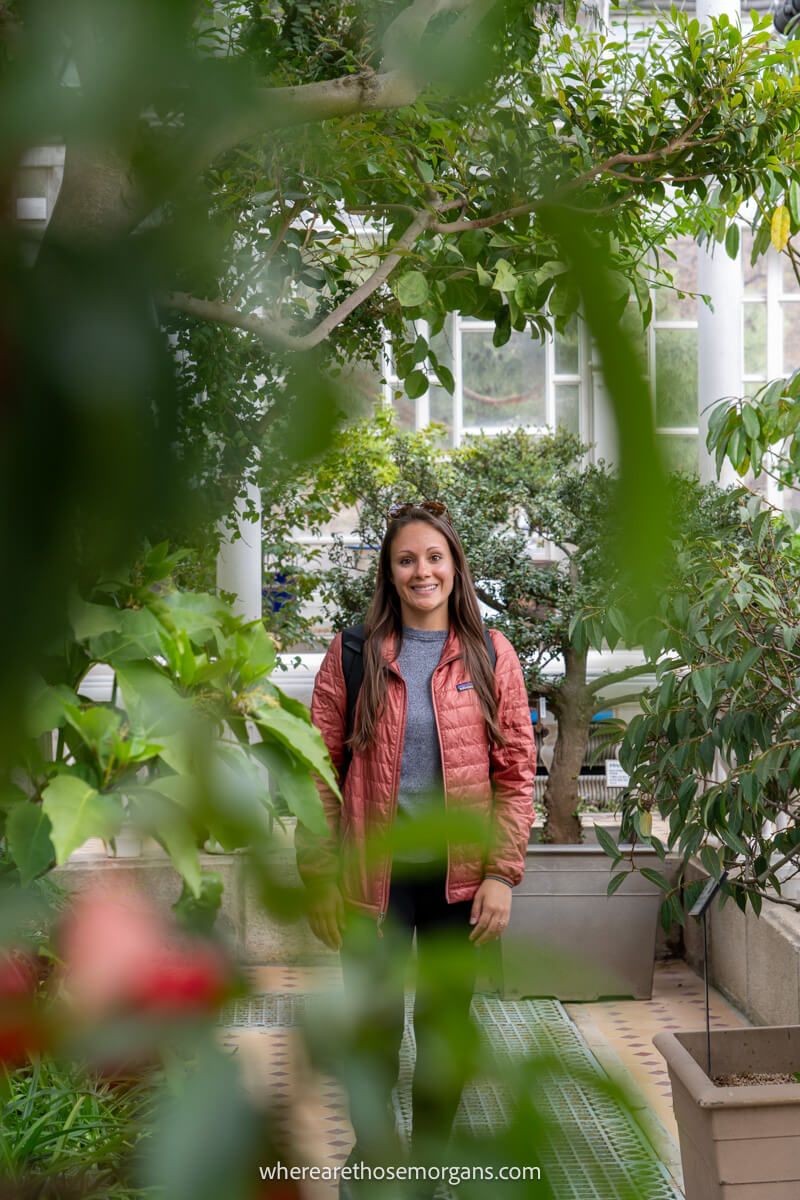
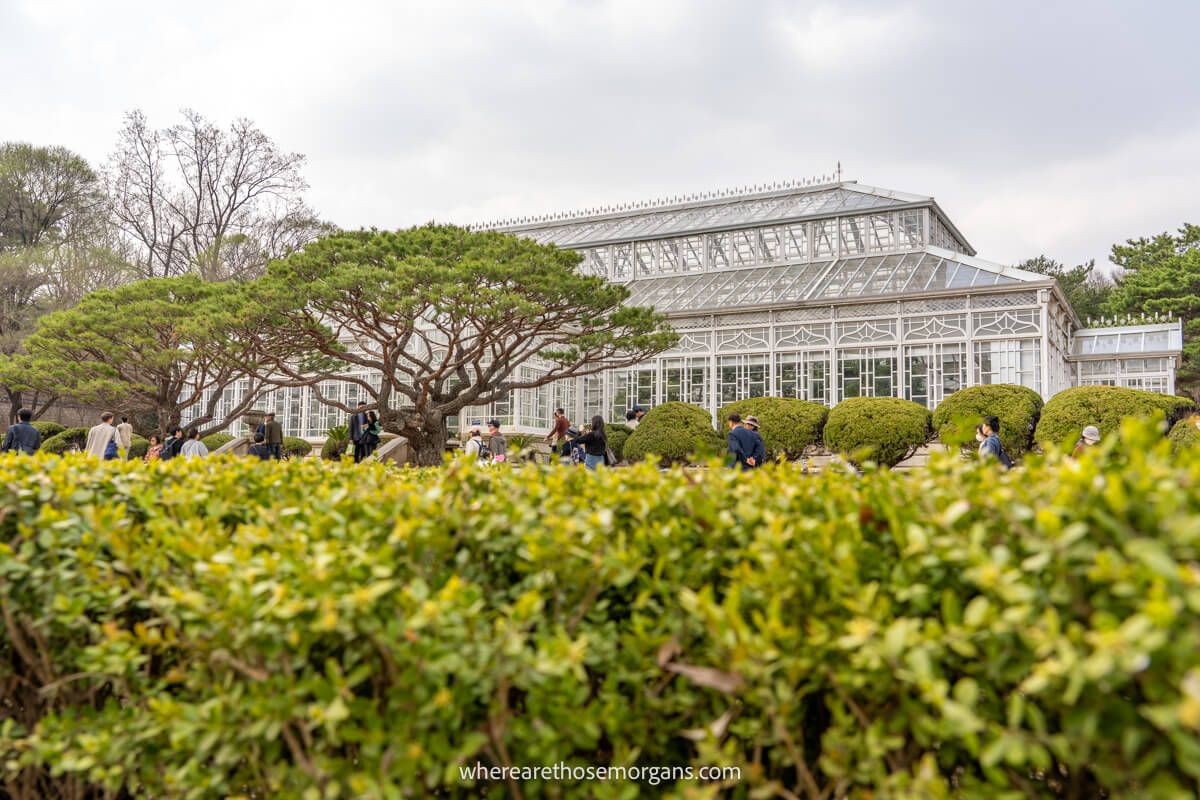
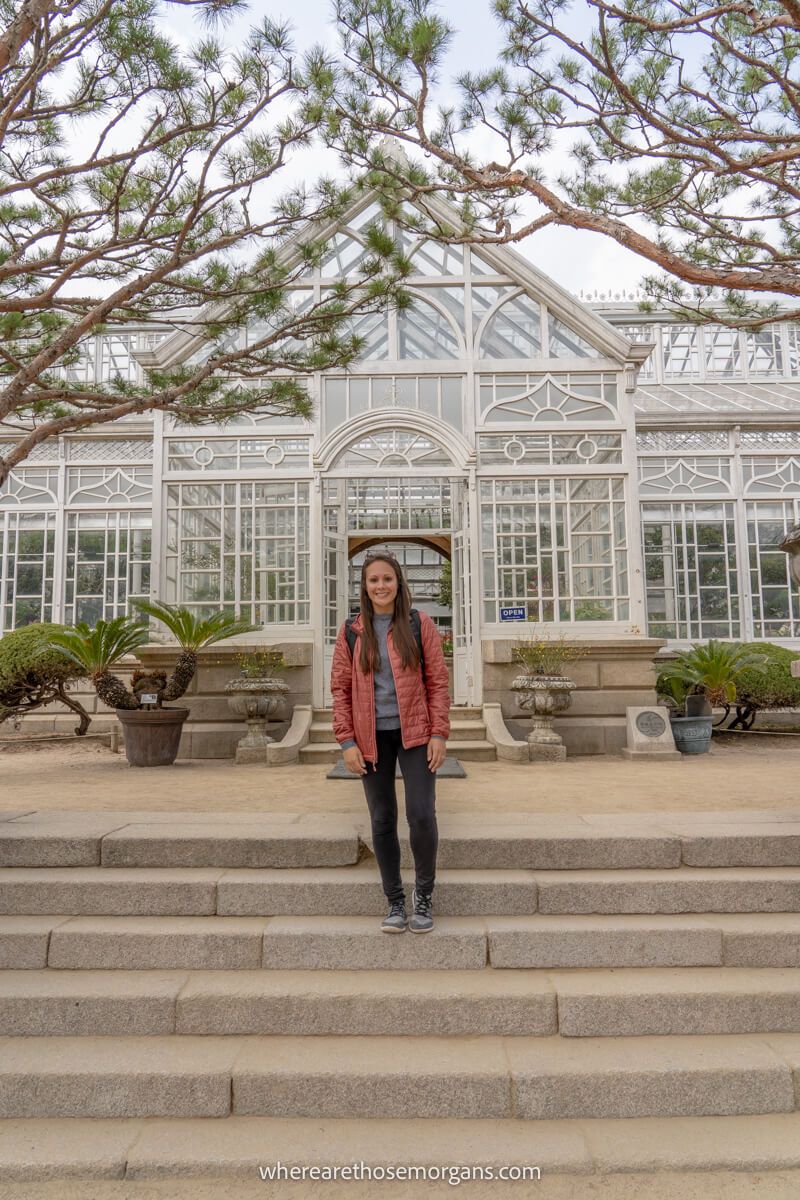
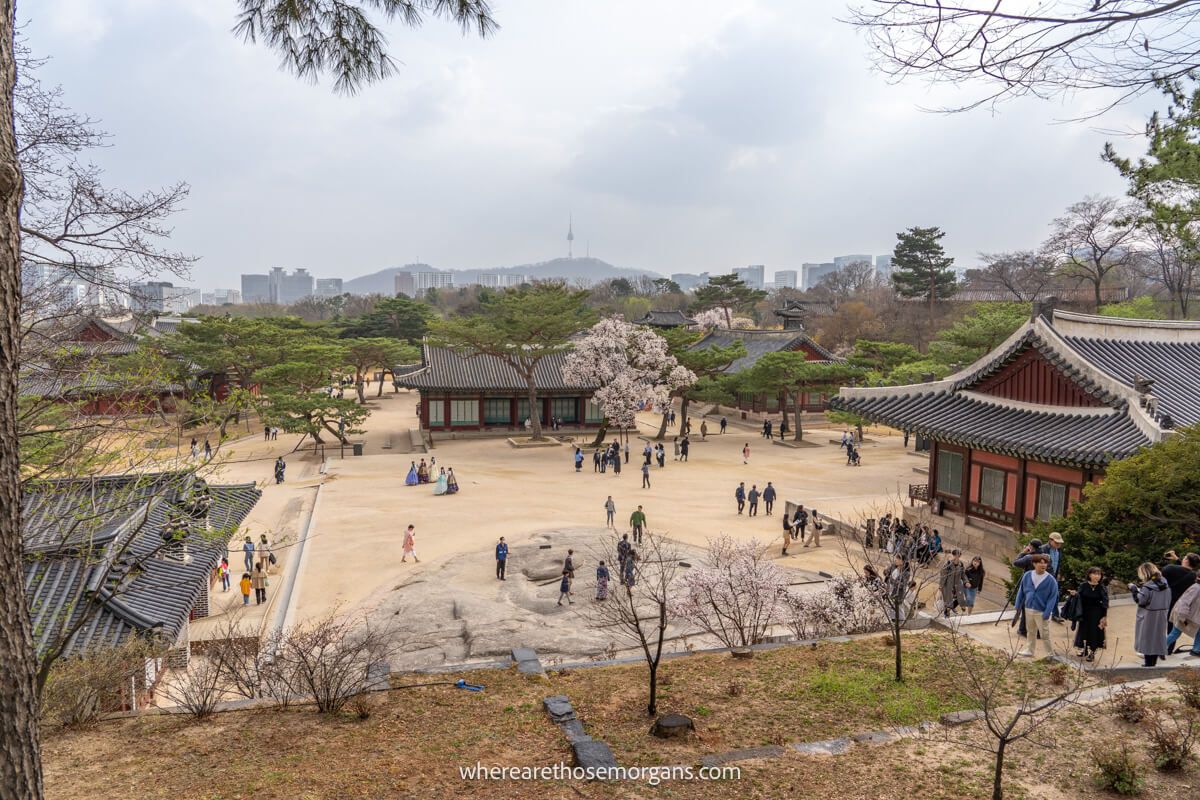
Our Popular Seoul Guides
- 35 best things to see in Seoul
- Guide to finding the best DMZ Tour
- Best things to do in Imjingak Park
- How to visit N Seoul Tower in South Korea
- Tip for visiting Seoul Sky observation deck
- What to see at the Jongmyo Shrine
- Complete guide to visiting the Seodaemun Prison
- 20 cool hotels in Seoul
More Seoul Palaces
- Gyeongbokgung Palace visitor guide
- How to visit Changdeokgung Palace
- Best things to see at Huwon Secret Garden
- Guide to visiting Deoksugung Palace
- What to see at the Gyeonghuigung Palace
- Best palaces in Seoul, South Korea
Want more Seoul content? Head over to our South Korea Travel Guides to explore the very best of Seoul and beyond.
We hope this guide featuring best things to do at Changgyeonggung Palace helps with planning your visit to Seoul!
Please let us know if you have any questions about visiting this palace or Seoul in the comments below.
Happy Travels,
Mark and Kristen
Enjoy this Changgyeonggung Palace guide? Pin it for your visit!
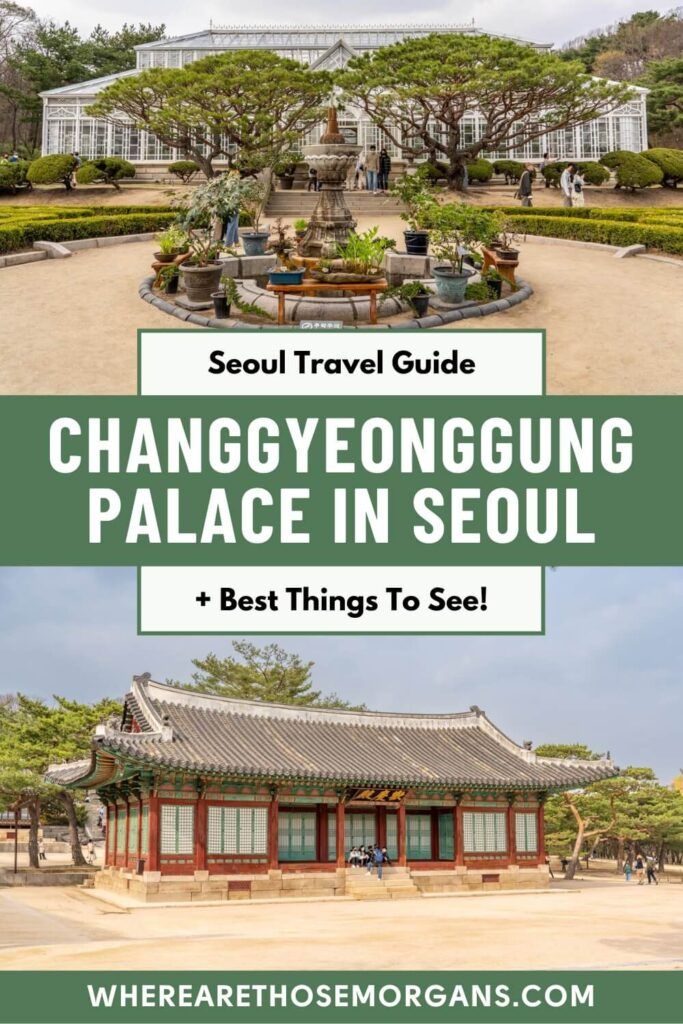
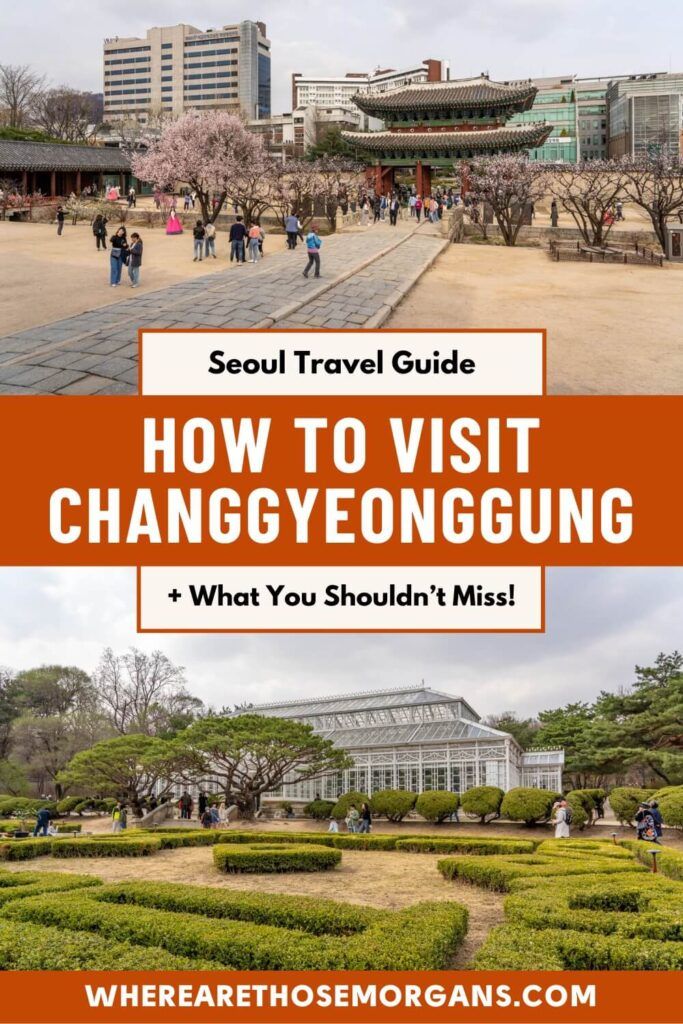
Note: This article contains affiliate links. When you make a purchase using one of these affiliate links, we may earn a small commission at no extra cost to you.
All Rights Reserved © Where Are Those Morgans, LLC. Republishing this article and/or any of its contents (text, photography, maps, graphics, etc.) in whole or in part is strictly prohibited.
Mark and Kristen Morgan are travel, hiking and photography experts. Over the last 6 years traveling full time, they have explored more than 40 countries and 30 US states.
Where Are Those Morgans has been featured in USA Today, Gestalten, Get Your Guide, CityPASS and Condé Nast Traveler along with various other publications. Read more about us.

